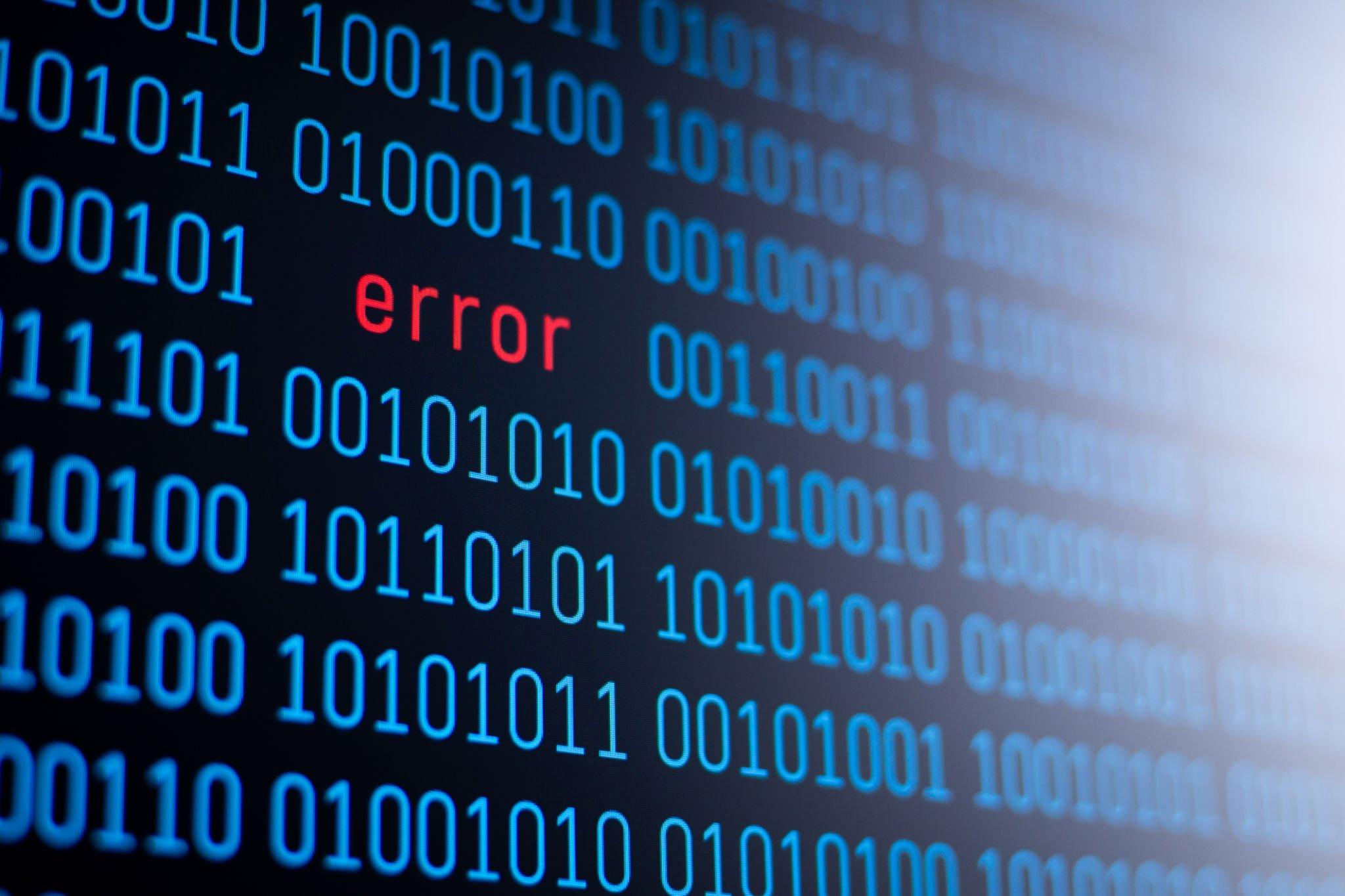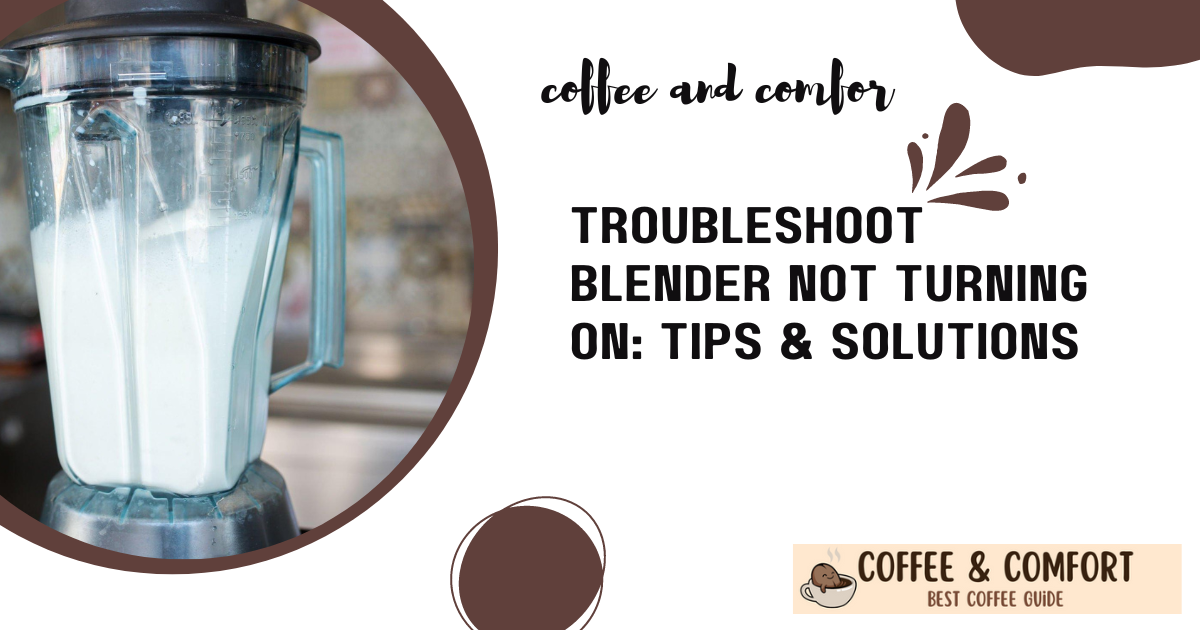Having trouble getting your blender to turn on? Check out these helpful tips & solutions to get your blender running again.
If you’re having trouble getting your blender to turn on, don’t worry – you’re not alone! It can be frustrating when your blender won’t cooperate, but don’t throw in the towel just yet.
With a few simple tips and solutions, you can get your blender back up and running in no time.
So, let’s get started and troubleshoot your blender not turning on!
What is an Error?
An error is an unexpected event that disrupts the normal flow of a program or process. Errors can occur due to a variety of reasons, such as a programming bug, improper user input, or an unexpected system or hardware malfunction.
It is important to be able to recognize and handle errors properly in order to ensure the stability of your program or process.
All errors and their corresponding solutions for the content provided:
| Error | Solution |
|---|---|
| 1. Power Supply Check | Plug the blender into a working electrical outlet. If it’s a cordless blender, ensure the battery is charged. |
| 2. Safety Interlock Inspection | Confirm the blender’s jar is correctly placed to engage the safety interlock system. |
| 3. Blade Assembly Inspection | Examine the blade assembly for any blockages, like food particles, and clean it. |
| 4. Overheating Reset | Unplug the blender, wait a few minutes, and then plug it in again if it has an automatic reset feature. |
| 5. Blender Settings Review | Ensure you’ve selected the appropriate setting on the blender; some require a specific setting to operate. |
| 6. Safety Button or Reset Switch | Check if your blender has a safety button or reset switch and act accordingly. |
| 7. Check for Built-in Safety Features | Look for a circuit breaker or other safety features that may need to be reset. |
| 8. Fuse Inspection | Investigate if the blender has an internal fuse that might be blown; replace it as needed. Refer to the manual for fuse details. |
| 9. Power Cord Examination | Inspect the power cord for visible damage; replace it if necessary or consult a professional for repairs. |
| 10. Seek Professional Help | If none of the above solutions work, consult a professional technician or the blender’s manufacturer for assistance. |
Types of Errors
There are several types of errors that can occur in a program or process. Syntax errors are caused by incorrect code or logic. These are also known as compile-time errors as they occur during the compilation of a program.
Runtime errors occur during the execution of a program and can be caused by incorrect logic, unexpected user input, or an unexpected system or hardware malfunction.
Logic errors occur when the logic within a program doesn’t properly handle a certain situation, leading to unexpected results.

Error Handling
Error handling is the process of recognizing and dealing with errors in a program or process. It is important to be able to properly handle errors in order to ensure the stability of the program or process.
Error handling techniques can vary depending on the type of error that occurs.
Common techniques include displaying an error message to the user, logging the error to a file or database, or simply retrying the operation.
Error Prevention
Error prevention is the practice of working to prevent errors from occurring in a program or process.
This can be achieved by using best practices when writing code, testing code thoroughly, using defensive coding techniques, and using automated error checking tools.
Properly preventing errors can help ensure the stability of a program or process, as well as save time and money.
Frequently Asked Questions (FAQ)
What could cause my Blender to not turn on?
A faulty power cord or outlet, a broken power switch, a malfunctioning motor, or a blown fuse could all be the cause of your Blender not turning on.
What should I do if my Blender isn’t turning on?
First, check the power cord and outlet to make sure they are working properly. If the cord and outlet are functioning properly, try checking the power switch to make sure it is in the correct position.
If the switch is correct, then check the motor and the fuse to make sure they are not malfunctioning.
How can I check if my power switch is working correctly?
The power switch may be stuck or jammed. Try wiggling the switch and make sure it is in the correct position. If it is still not working, you may need to replace the switch.
How can I check if my motor is functioning correctly?
If your Blender is not turning on, the motor may be malfunctioning. You can test the motor by taking the Blender apart and checking the connections to the motor. ‘
If the connections are loose or damaged, the motor may need to be replaced.
What would cause the fuse to blow on my Blender?
A blown fuse in your Blender could be caused by a short circuit, a power surge, or a faulty motor. If your fuse has blown, make sure to replace it with an appropriately rated fuse to prevent an electrical shock or fire hazard.
How can I prevent my Blender from not turning on?
To prevent your Blender from not turning on, make sure to check the power cord and outlet for any damage or wear.
Also, check the power switch and make sure it is in the correct position. Additionally, make sure to check the motor and fuse periodically to make sure they are not malfunctioning.
What are some tips to make sure my Blender is working properly?
To make sure your Blender is working properly, make sure to inspect the power cord and outlet regularly for any signs of damage or wear. Also, periodically check the power switch, the motor, and the fuse to make sure they are all in good condition.
Additionally, make sure to use the correct type and size of fuse to prevent any electrical shocks or fire hazards.
Final Word
Troubleshooting Blender not turning on can be a daunting task, but with the right tips and solutions, you can get your blender up and running in no time.
With a few simple steps, you can have your blender back in action and ready to blend your favorite smoothies and shakes.

My name is Michael Jones, and I’m a coffee enthusiast and expert based in the US. I run my own coffee shop, and I’m passionate about everything related to coffee. On my website, Coffee and Comfort, I share my knowledge and tips to help you elevate your coffee experience. Whether you’re a beginner brewer or a seasoned barista, I have something for everyone. I’ll teach you how to choose the right coffee beans, grind them perfectly, and brew a delicious cup of coffee at home. I’ll also share tips on how to make different coffee drinks, like lattes, cappuccinos, and espressos. But more than just teaching you about coffee, I want to help you create a coffee lifestyle that you love. Coffee is more than just a beverage; it’s a way to connect with people and enjoy the simple things in life.
